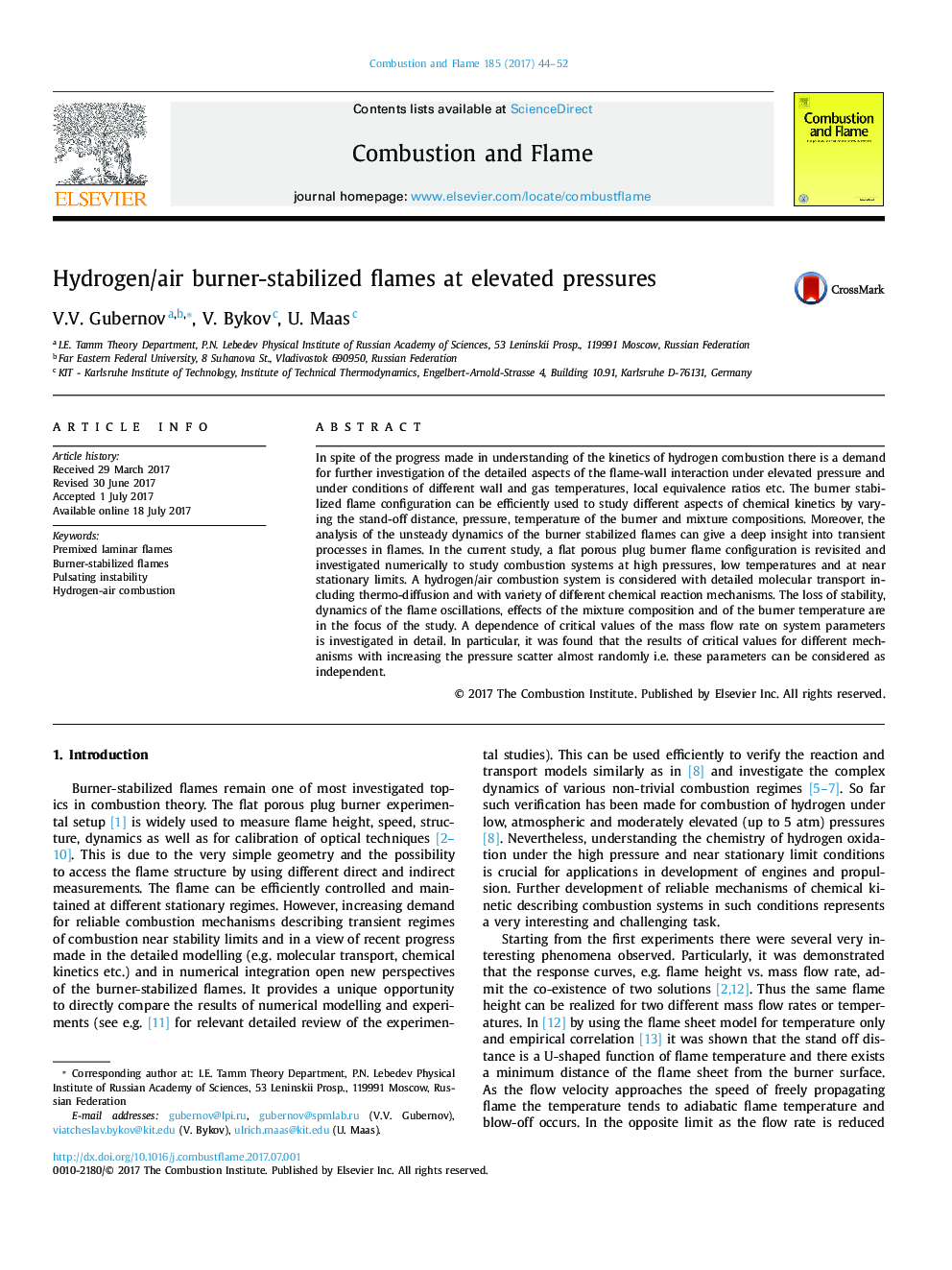| Article ID | Journal | Published Year | Pages | File Type |
|---|---|---|---|---|
| 6468044 | Combustion and Flame | 2017 | 9 Pages |
In spite of the progress made in understanding of the kinetics of hydrogen combustion there is a demand for further investigation of the detailed aspects of the flame-wall interaction under elevated pressure and under conditions of different wall and gas temperatures, local equivalence ratios etc. The burner stabilized flame configuration can be efficiently used to study different aspects of chemical kinetics by varying the stand-off distance, pressure, temperature of the burner and mixture compositions. Moreover, the analysis of the unsteady dynamics of the burner stabilized flames can give a deep insight into transient processes in flames. In the current study, a flat porous plug burner flame configuration is revisited and investigated numerically to study combustion systems at high pressures, low temperatures and at near stationary limits. A hydrogen/air combustion system is considered with detailed molecular transport including thermo-diffusion and with variety of different chemical reaction mechanisms. The loss of stability, dynamics of the flame oscillations, effects of the mixture composition and of the burner temperature are in the focus of the study. A dependence of critical values of the mass flow rate on system parameters is investigated in detail. In particular, it was found that the results of critical values for different mechanisms with increasing the pressure scatter almost randomly i.e. these parameters can be considered as independent.
